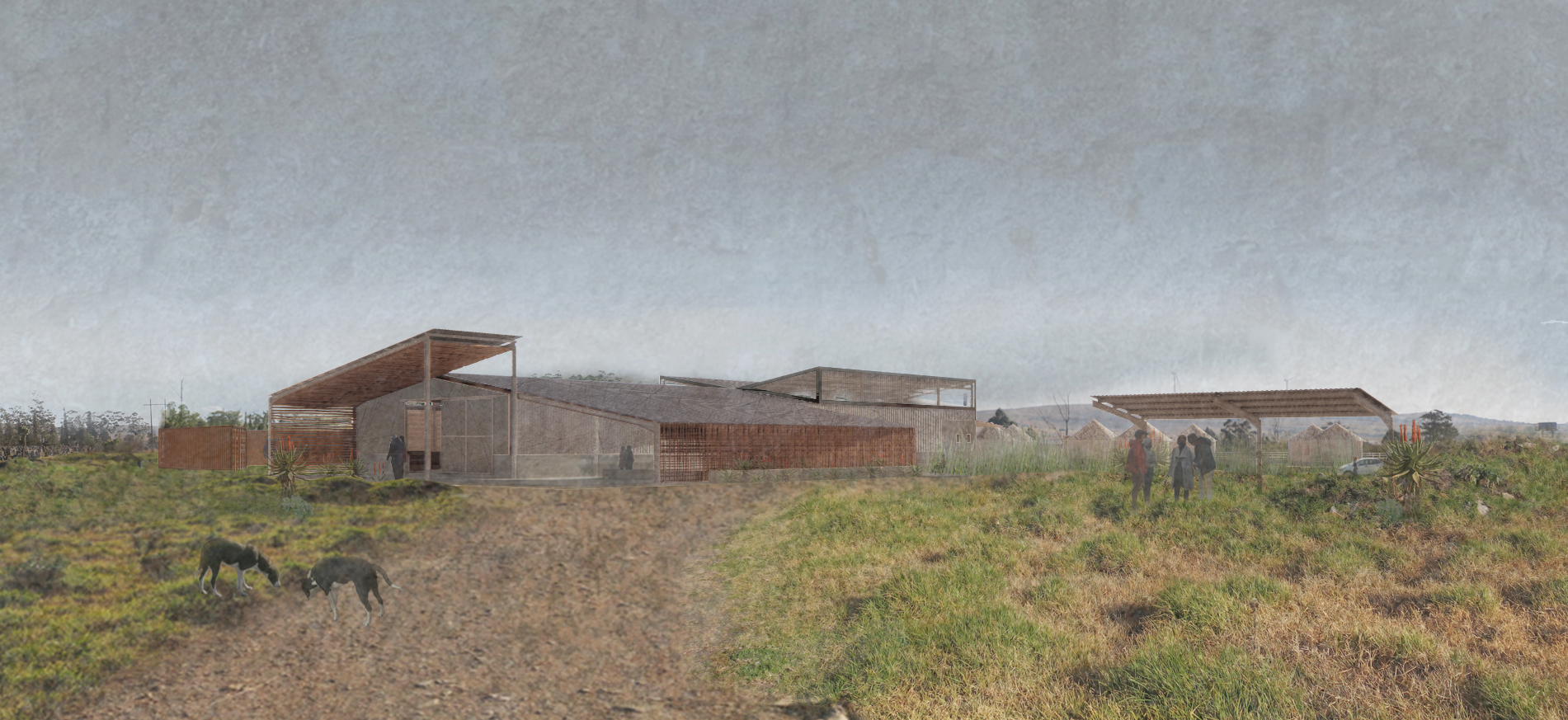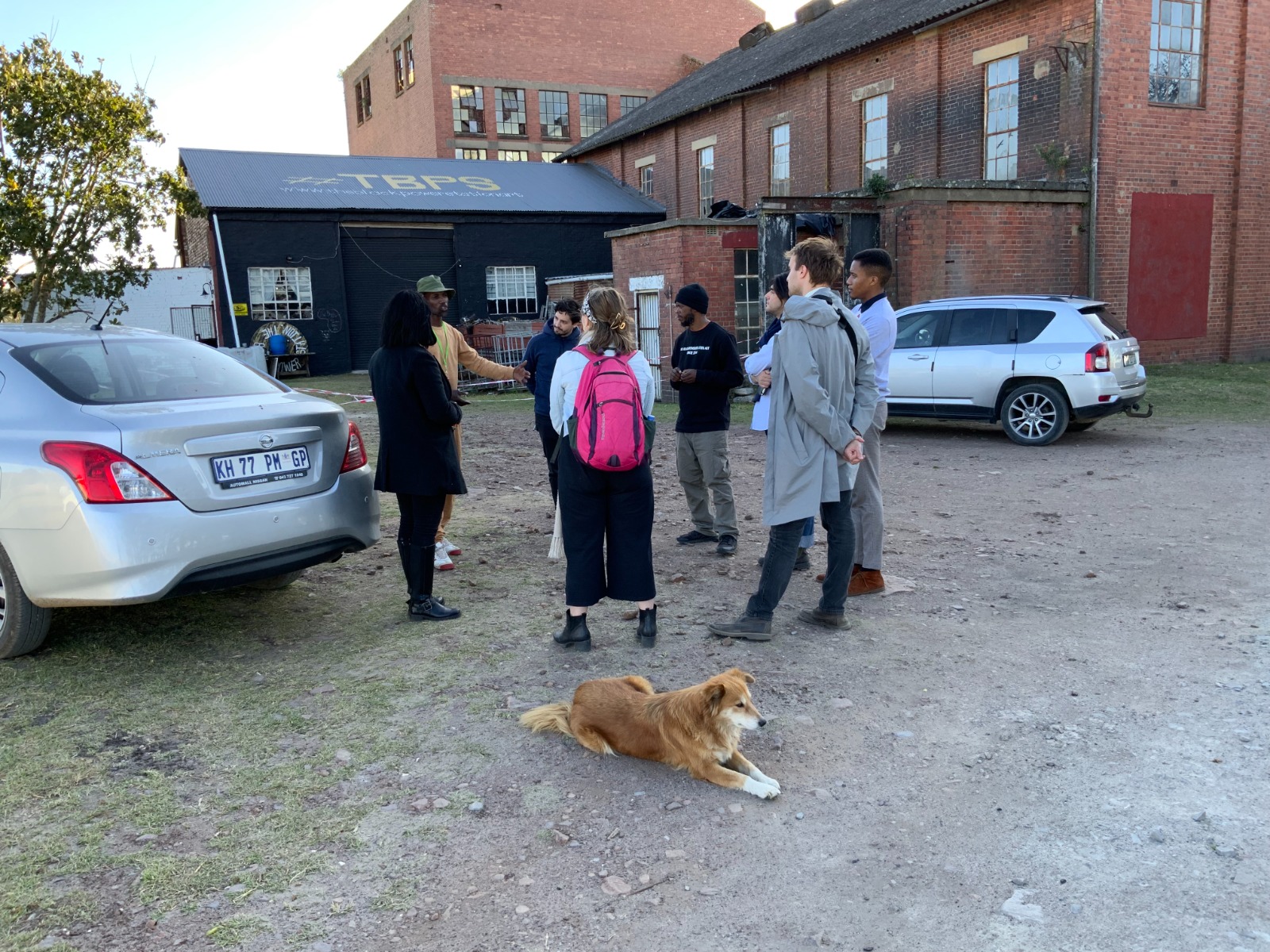“I first met Xolile Madinda (also known as 'X') more than 15 years ago in Makhanda (then Grahamstown),” explained Lobley, Assistant Professor in the Department of Music. “I was conducting my fieldwork for my PhD in Ethnomusicology and exploring ways to activate a colonial sound archive.”
UVA Deepens Collaborations with The Black Power Station in South Africa
UVA Deepens Collaborations with The Black Power Station in South Africa

his summer, a team of UVA professors and graduate students traveled to Makhanda, South Africa to co-design a new space with The Black Power Station, a DIY, self-managed, community-driven art space and organization. The project was funded by a Three Cavaliers grant, which supports professors from multiple disciplines and their students, to create collaborative interdisciplinary projects. The professors who received the grant, Noel Lobley (Music), Phoebe Crisman (Architecture), and Rupa Valdez (Public Health; Engineering) had this idea in mind for several years, but the collaboration between Lobley and the Black Power Station dates back much further.

They took archival fragments into multiple public spaces and have continued to work together. About five years ago, Lobley heard from X that he’d been granted permission by South Africa's National Arts Festival to develop a space in an abandoned power station in a derelict industrial area. “From that point, we started to imagine together ways of collaborating between The Black Power Station and UVA/Charlottesville.” This most recent collaboration has focused on the space itself and how to develop the power station and a new accompanying building into an international artist destination.
“One of the existing buildings is a large industrial metal shed that we've kept and completely transformed,” Crisman, Professor of Architecture and Director of Global Studies, described. The design by Crisman and her students provides a new entrance canopy with solar panels to power the building. “We created new dormers to bring in light, expel hot air, and collect rainwater for reuse. We studied rondavels, a traditional Xhosa dwelling type, and used local wood and earth to design new housing for artists in residence,” Crisman added. To keep the building sustainable, the design also incorporates recycled materials, including shipping pallets, rope, and reclaimed steel siding. The space is subdivided into three parts: a big performance space, a green gallery in between, and a smaller section for everyday uses, including a flexible common space and artist studios.
For Madinda, there is value in the co-design process. “I don’t feel overpowered because I’m part of the process of what we’re trying to build together,” he stated about the collaboration between a big institution like UVA and a smaller one like TBPS. “I’m not overwhelmed by [this collaboration] because I can see the heart and the vision of the people I work with. I feel empowered working with the University of Virginia.”
Part of the collaboration came about through the labors of the four graduate students who came to Makhanda. Matías Vilaplana Stark (Music), Courtney Rogers (Public Health), Eli Sobel (Architecture), and Bucky Gerson (Architecture) did extensive background research in order to prepare for the trip. “The students were very excited about doing work that could make a difference, and will be public-facing,” Crisman commented. “For the architecture students, this was their first experience designing with communities or even clients. It stopped being theoretical and became more tangible. You need both.”

Music student Vilaplana was also moved by his experience and what they were creating. “It’s much more than an art space, for many of the people that work and participate in events, it has become a home,” he said. Stark added that this space offers shelter from the harsh realities of Makhanda and a space that allows its participants to grow intellectually, artistically, and spiritually.
Working not only across disciplines and academic hierarchies, but also temporal and seasonal changes, and timelines was a challenge for the participants. “The biggest challenge and greatest reward of this kind of complex, community-engaged research is working collaboratively,” explained Crisman. "You have to invest time, commitment, and open-mindedness to this type of work.”

But everyone agrees that a collaboration like this is essential. “It would be unthinkable to not have worked together with TBPS,” commented Vilaplana. “I mean, who knows better than them what their needs are? Or the way things work and function in Makhanda?”
Crisman agreed, “I would never design in isolation. It’s about combining my knowledge of architecture with the community's needs. With a team, we can all think through options together.”
By the end of the summer, the team’s vision had come to fruition in the new design. The next steps for the project will be to transform their visions into physical materials and a virtual space that TBPS can use for fundraising. Once enough funds are raised, the group hopes to make these plans a reality.
“We have to raise awareness withing the broader community of Virginia, to a broader community of supporters, to rally people to support me, to make this dream come alive. I call upon all of these patrons, Americans, non-Americans, people who have an open heart. I want them to come to invest their time, whatever they have, to make this idea come alive,” said Madinda.
(top image: The new Black Power Station flexible event space. Image Credit: Phoebe Crisman)



